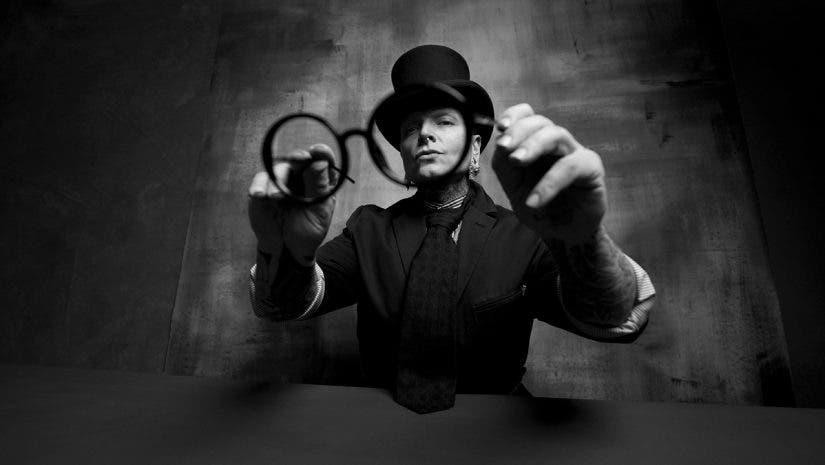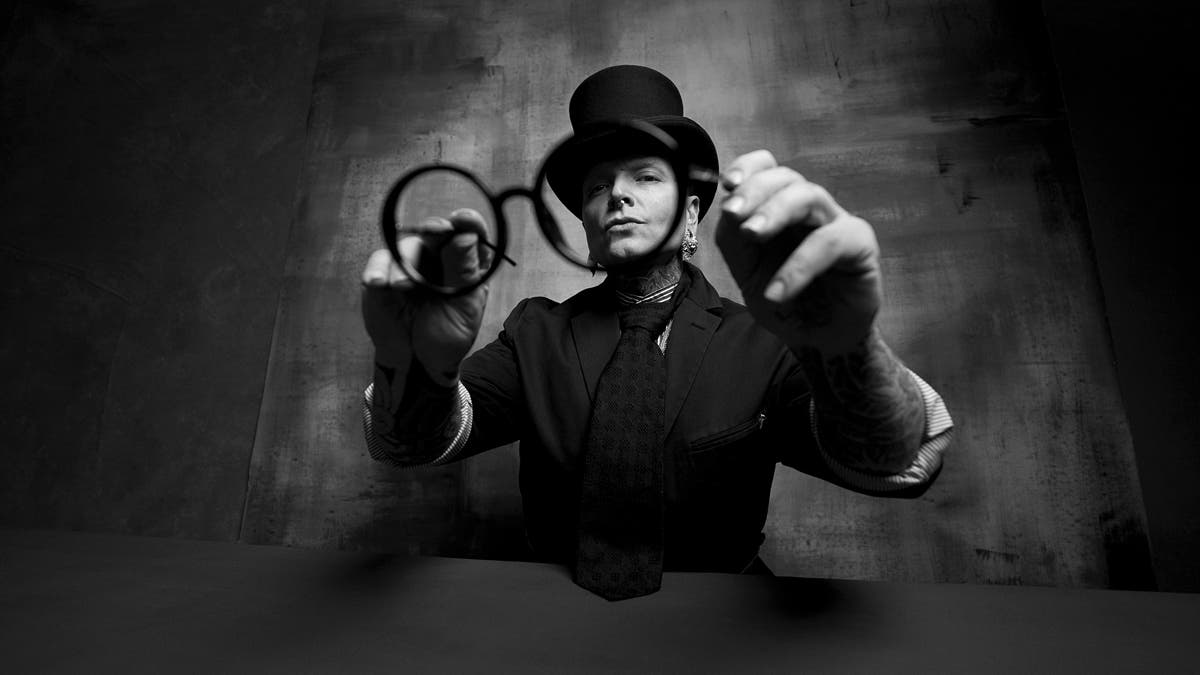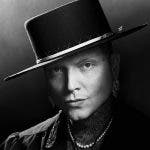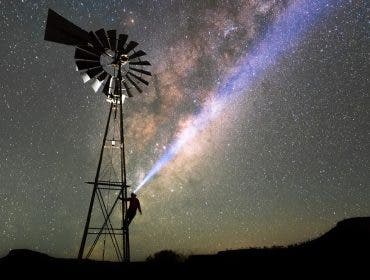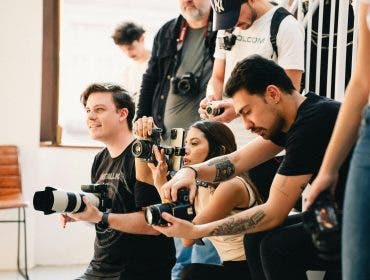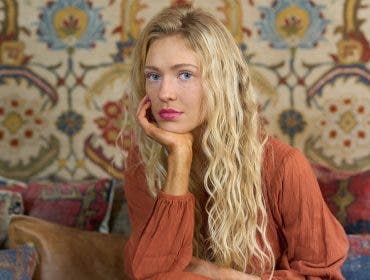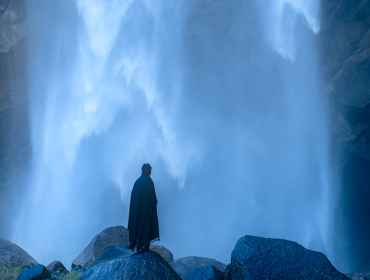Jonny Edward is a creator who brings depth to their portraits. Not just depth of light and environment via layering, but depth of subject and connection. I asked Jonny to give us a bit of an origin story and to answer some questions that sprang to mind when viewing their work.
Below are Jonny’s words [Daniel Norton]
Looking back, photography has always been an integral part of my life and being ever since I was a little boy. To put it mildly, I had a rough, traumatic, unstable childhood, and we were constantly moving around the country for a plethora of reasons. That meant I was always saying goodbye and leaving things and friends behind, perpetually stepping into the unknown, which is very challenging for a child.
At some point, I was gifted a Polaroid camera, and it became both a conduit for connectivity and a lifeline that allowed me to archive and hold onto people, places, and things that were important to me. A shoebox full of moments and memories that I could carry and keep close to my heart.
Although I dabbled in photography throughout adolescence and early adulthood, I essentially lost my connection to the medium until about a decade ago, when I found my way back out of sheer desperation, more than anything else. I was in a dark place, struggling with depression and anxiety, and I felt wholly disconnected from myself and the world. It was absolutely one of the lowest and scariest points in my life.
Reconnecting with a Passion
As I had discussed photography on and off quite a bit and my latent love for the art form, my partner suggested I buy a camera, if only to reconnect with a dormant passion and a part of myself. Well, that camera, the Pentax K3, ultimately saved my life and gave me the gift of purpose, place, and passion. I started photographing everything, from sunsets and flowers to architecture and street, and everything in between. The camera was always in my hand or at my side, and I became wonderfully enamored and obsessed with it.
At some point, I began creating candid portraits of individuals I met on the street, which led to more formal and creative portraiture. Soon thereafter, I learned that portraits combined my love for people and photography in a manner that allowed me to connect with others, myself, and the world in a profound manner, unlike anything I had ever known or experienced. The rest, as they say, is history…
I’ve been working primarily in the studio for about seven years and have been full-time professionally for the last half-decade or so. Truthfully, there is nothing else I’d rather do in the world. I truly love being behind the camera and teaching, supporting, and mentoring fellow photographers. I am here on this earth to create and support fellow creators and to wield my camera as a tool to make individuals feel seen, heard, accepted, respected, appreciated, and loved.
How do you choose your portrait subjects?
I’ve been fortunate to create portraits of thousands, if not tens of thousands, of humans over the past eight years. To me, each individual I’ve photographed is unique and incredible in their own way.
When I first started, I would find my portrait subjects anywhere and everywhere. Strangers, friends, on the street, at the bar, via social media, and at community events, among other places. I was always on the lookout for individuals that I found intriguing or unique.
These days, social media is definitely my tool of choice for scouting and sourcing beyond my network and those I encounter on a day-to-day basis. Diversity and inclusivity are both extremely important to me as I continually strive to create a body of work that embodies these vital elements.
I love photographing fellow photographers as well as artists of other mediums, genres, and niches. In my work, I value connection above all else and work hard to establish a genuine connection and rapport with whoever is in front of my lens. When working and creating with fellow artists, the compulsion and passion to create are powerful, omnipresent bridges that allow for a lovely degree of immediacy and intimacy in terms of connection.
Do you create the concept of the shoot from the subject, or do you find a subject to fit an idea (or a combo)?
It is highly dependent and wholly variable on the individual, their vision, and the project, among other factors. Whenever possible, I prefer for the individual to be the creative foundation and for all other elements to build on and emerge from that foundation.
My creative process is centered around the notion of an anchor. I start with a single anchor of some sort and build and layer the other elements to a harmonious or intentionally disharmonious degree.
In truth, most of my work is fairly minimalist if examined critically or placed under an evaluative microscope. Generally, there is a subject, a set of canvas backdrops, and some styling that is aesthetically aligned. Lighting is the most complex part of my workflow, and even that can be broken down into rudimentary bits if we look at what each layer is doing in accord with the shadows.
If something is not adding to the visual narrative or the story of the individual in the frame, I remove it quite simply.
Image Breakdowns
Jasmine
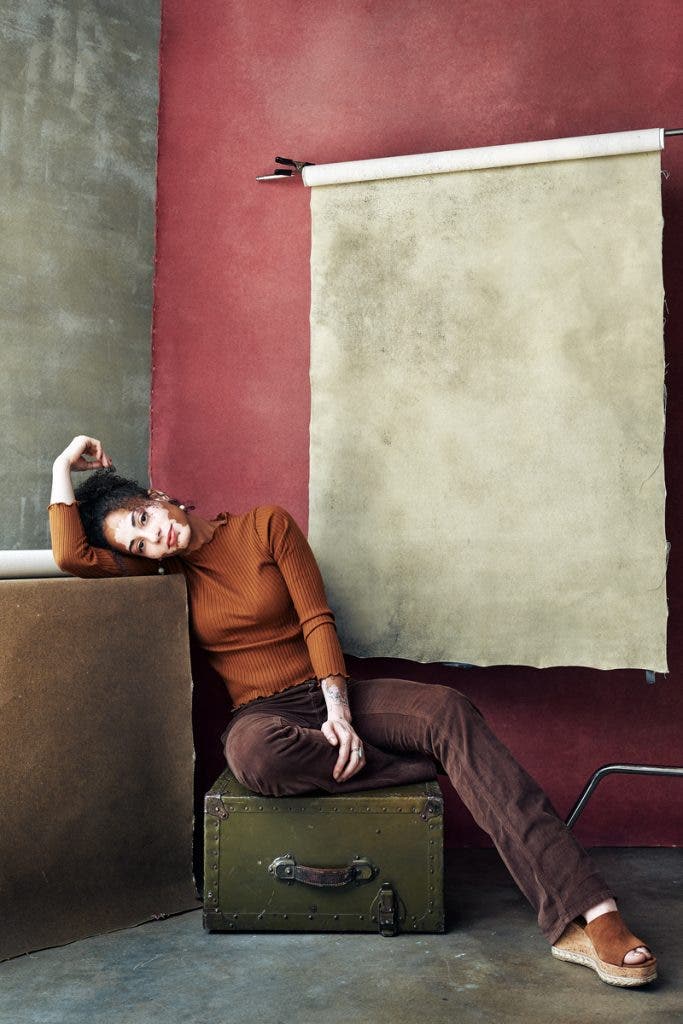
I created this portrait of Jasmine at my old studio using a combination of natural window light and a single strobe paired with a 5′ octabox. I used natural light as a general base and added a strobe for additional punch and contrast, as well as to bring more light onto Jasmine in the scene. The row of windows is off-camera to the left, so I opted to place the strobe in a similar position and orientation to create the illusion of a single, organic light source.
To me, what makes this portrait so unique and visually compelling, beyond Jasmine’s singular beauty, is the interplay of lines, geometric shapes, colors, tones, and textures.
In terms of color and texture, I used Abena’s wonderfully varied skin tone, as well as her wardrobe, as a base and built a harmonious, earthy palette from there, using canvas backdrops and vintage props. I like to think of color in terms of a makeup palette or a painter’s palette, and everything works together exceptionally well here. Additionally, the interplay of textures between the various types of canvas, Abena’s clothing, the props, and even the raw concrete floor collectively create a bit of tactility as well as dimension.
The lines and angular shapes of the canvas as props create a channel or puzzle that allows Abena to fit in in a manner that is both integrative and isolating, as her figure and shapes are much more rounded, organic, and flowing.
Overall, I adore both the depth and mood of this portrait, and it feels very natural and unprepossessing. It’s quietly powerful.
Miranda

I created this portrait of Miranda in my current studio during my workshop, Artistic Alchemy, last year. This is one of those images that has been widely circulated, and it’s one of my most popular shares across social media. What I love about this image is how powerful Miranda looks and presents, along with the general esoteric and almost occult vibe. It could be a Tarot Card, a bold portrayal of regality, or a deity.
The styling was spontaneous, although a general Goddess theme was in mind. The bottom is a piece of scrap fabric that has been wrapped to form a skirt and draped to introduce a sculptural element. We built up two wooden pallets to elevate Miranda further, leaning into the thematics of hierarchy and ascension.
I am a big fan of dirty frames and adore the entirety of the scene, including the windows, modifiers, stands, backgrounds, and the like. This frame lends itself to an aggrandized theatricality, which I find very captivating.
In terms of light, several different sources are at play, each with its unique qualities and color temperatures. I put this set and scene together quickly and off the cuff as the sun was setting, throwing beautiful columns of hard light through the high, small, west-facing windows at the back of my studio. That was the anchor for lighting. From there, we added a 36″ deep octabox with a grid as the key for Miranda, keeping the light directional and contrasty while controlling any unwanted spill.
Further Refinements
I knew I wanted a circle of light behind her head to add a pseudo-religious, almost allegorical vibe, so we brought in an optical spot projector and shaped it accordingly. At that point, the scene was still feeling too flat, so I grabbed an old Smith-Victor tungsten lamp and rigged it overhead for separation and a sun-like feel for backlight. Lastly, I used a 7′ umbrella with diffusion behind me to lift the shadows and fill the scene.
Overall, the layered light felt quite compelling, but the color needed work. Since the overhead light is tungsten, I opted to match the color of the circular background light with the optical, tuning that constant to around 3300 kelvin. The light coming in through the window was quite blue, around 6000 kelvin, so I decided to set the key light on Miranda to a warmer temperature, around 4800 kelvin. This resulted in a seemingly neutral tone on Miranda’s skin, while the background and backlight appear very warm, and the natural light from the window appears quite cool. That layering of not only light but the color of light helps elevate this portrait to the next level.
Lastly, to add atmosphere and cinematic elements, we hazed the scene, which brought the window light to life.
All of the lights work well together, despite being quite disparate, and they all lead to our subject and scene, guiding the viewer directly through the frame to our Goddess. Lovely!
Naomi
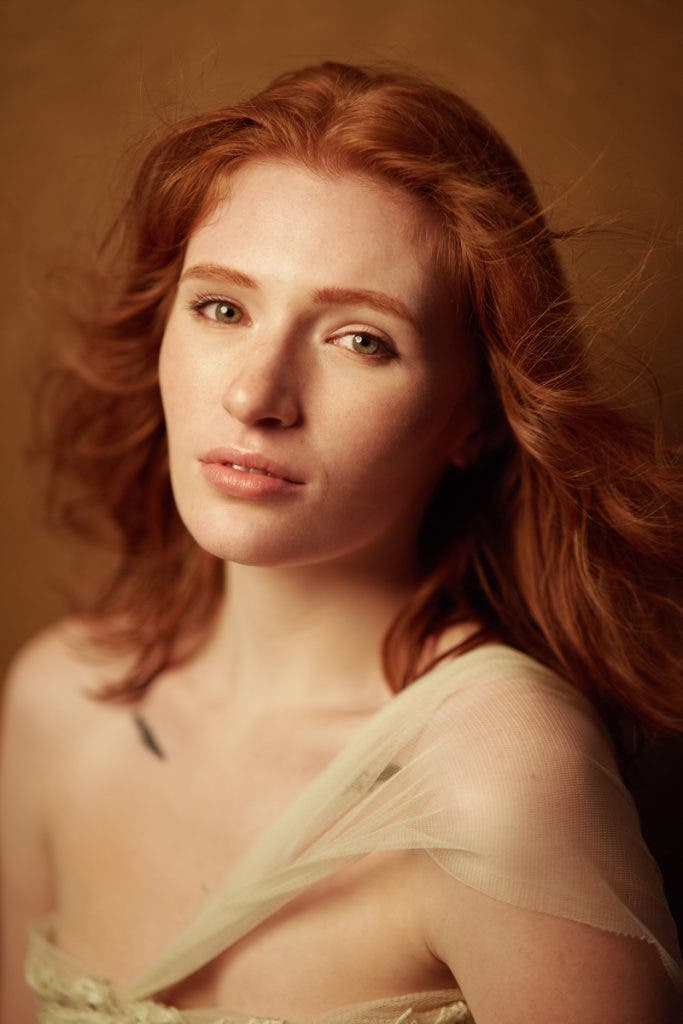
This portrait of Naomi, also created at one of my workshops, is the most straightforward and least complex of all these images, both in terms of lighting and set design. Given Naomi’s skin tone, hair color, and wardrobe, I knew I wanted a warm scene, so we opted for an earthy brown backdrop. In terms of lighting, this is a rare instance where I used only a single light paired with a 150cm deep octabox with a grid, set as the camera light, oriented high, angled downward, and feathered moderately. The resulting light is soft yet contrasty, and the large modifier set, positioned close yet directionally, lends itself to a very painterly feel.
Regarding light color, to maintain a warm and unified tone, I decided to shift away from the standard daylight temperature of 5500 kelvin toward a distinctly warmer vibe around 4500 kelvin. This creates a sense of color grading as the shadow warms up significantly, and the skin tone, hair, wardrobe, and backdrop all become even more harmonious.
Another relevant variable here is my lens choice, an 85mm shot close to wide-open around F2.2: this creates a lovely degree of fall-off and bokeh within the frame, further reinforcing the painterly aesthetic.
The inclusion of a basic fan adds some movement to Naomi’s hair and wardrobe, creating a whimsical sense of dynamism.
Overall, I love this portrait because it is so simple yet so thoughtful and impactful. Any additional lights or set elements would have detracted from the mesmerizing quality of this image rather than adding visual value. My process is always oriented toward shadows, emotion, depth, and minimalism, adding to the set, scene, or styling only if it elevates the significance or adds to the story.
What continues to inspire you to create?
Life! Haha! Seriously, though, I am forever inspired by the experiences that comprise my existence, both big and small, significant and inconsequential. Inspiration exists all around and within us, always. It’s an omnipresent universal force.
Moreover, I am inspired by people, their journeys, and the human experience both on an individual and collective level. Artists who are compelled to seek and committed to creative growth will never find themselves short of inspiration.
Pragmatically, cinema, painting, and sculpture are among my most significant influences and direct sources of inspiration, alongside music, nature, and literature.
If I ever find myself feeling uninspired, I will challenge myself to pick up the camera and click the shutter. The subject, scene, and intent are all irrelevant; the simple act of creating is itself a powerful, energetic catalyst for inspiration.
What advice would you give to photographers seeking to discover or define their style?
Firstly, definitions are dangerous territory for artists of all mediums and genres. As soon as we define, we create borders, boundaries, and boxes. Those arbitrary barriers are cataclysmic impediments to exploration, growth, and creative evolution. As artists, our styles will ebb and flow with the days, months, and years, as the seasons do. It’s vitally important for us to create and experiment as much as possible and to foster an inner dialogue wherein we both tune in to and embrace whatever feels most compelling and resonant to us.
To develop a unique and identifiable style, we must first create for ourselves, foregoing anything that aligns with trends, comparison, judgment, validation, etc. It is much easier said than done, no doubt! However, if it were easy, then it wouldn’t be a worthwhile endeavor.
To that end, we must realize that there’s no right or wrong lighting, style, technique, approach, or process; there’s only different. To develop a style, we must be willing to be and embody different.
There is art within you that only you can create, a voice within you that only you can speak. Become obsessed with art, medium, and craft, and let the external world fade away into nothing more than faint whispers. Furthermore, remember that this is a journey, not a destination.
Never stop creating, and always remember that life is art, and art is life!
All Photos – Jonny Edward
